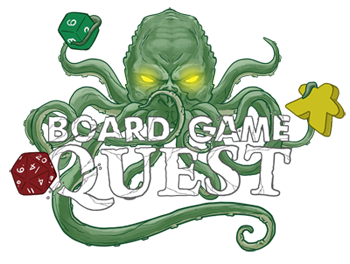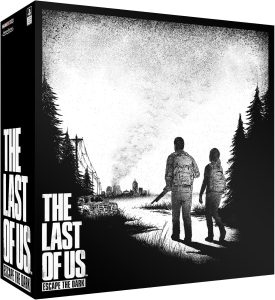 I never know how harsh to be with an adaptation of an existing intellectual property. It’s an easy enough decision when the underlying game is bad, but when it’s good or even great, how much does its devotion to the theme matter? If Uwe Rosenburg releases his next great worker placement game set in the Mushroom Kingdom, should I knock it for not accurately representing the sibling rivalry between Mario and Luigi? What if I care about these things, but other gamers might not?
I never know how harsh to be with an adaptation of an existing intellectual property. It’s an easy enough decision when the underlying game is bad, but when it’s good or even great, how much does its devotion to the theme matter? If Uwe Rosenburg releases his next great worker placement game set in the Mushroom Kingdom, should I knock it for not accurately representing the sibling rivalry between Mario and Luigi? What if I care about these things, but other gamers might not?
Apropos of nothing, today’s review is for The Last of Us: Escape the Dark, a board game adaptation of the video game (and now TV show) of the same name. Is this introduction some kind of ominous foreshadowing, or is it yet another pointless non sequitur with no relevance to my final thoughts?
The Last of Us: Escape the Dark is a cooperative game for 1-5 players. It plays in around 60-90 minutes, and plays best with 4-5 players.
Gameplay Overview:
There are a lot of ancillary survival systems in Escape the Dark like crafting and inventory management, but most of the game boils down to exploring, fighting, and searching. On each of the game’s 16 days, each player can move to an adjacent location, then either camp or explore at that location. When a group explores a location, the lead Survivor flips over that location’s top Chapter card, then resolves that card for the group. There may be some choices or skill checks, but most Chapter cards inevitably result in combat.
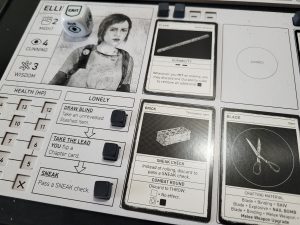
When players initiate combat, you first set up a large semi-randomized pool of dice, representing the enemy’s health. Then, players usually have the option to engage in some pre-combat rounds. A successful Listen check lets you tweak the enemy health pool, whereas a successful Sneak check gives participating players a free attack. Finally, the combat proper begins, with players choosing how to attack, rolling relevant dice to whittle down the enemy’s health, and suffering retaliation damage unless they can block. Combat continues until someone is dead, or the players collectively decide to run away.
A successful exploration reduces the threat at your current location, and lets the party search for crafting materials and useful items. If players manage to travel from their starting location to the town of Jackson, then defeat the final Boss, within the 16-day time limit, they win. If any player runs out of Health, or if players run out of time, everyone loses.
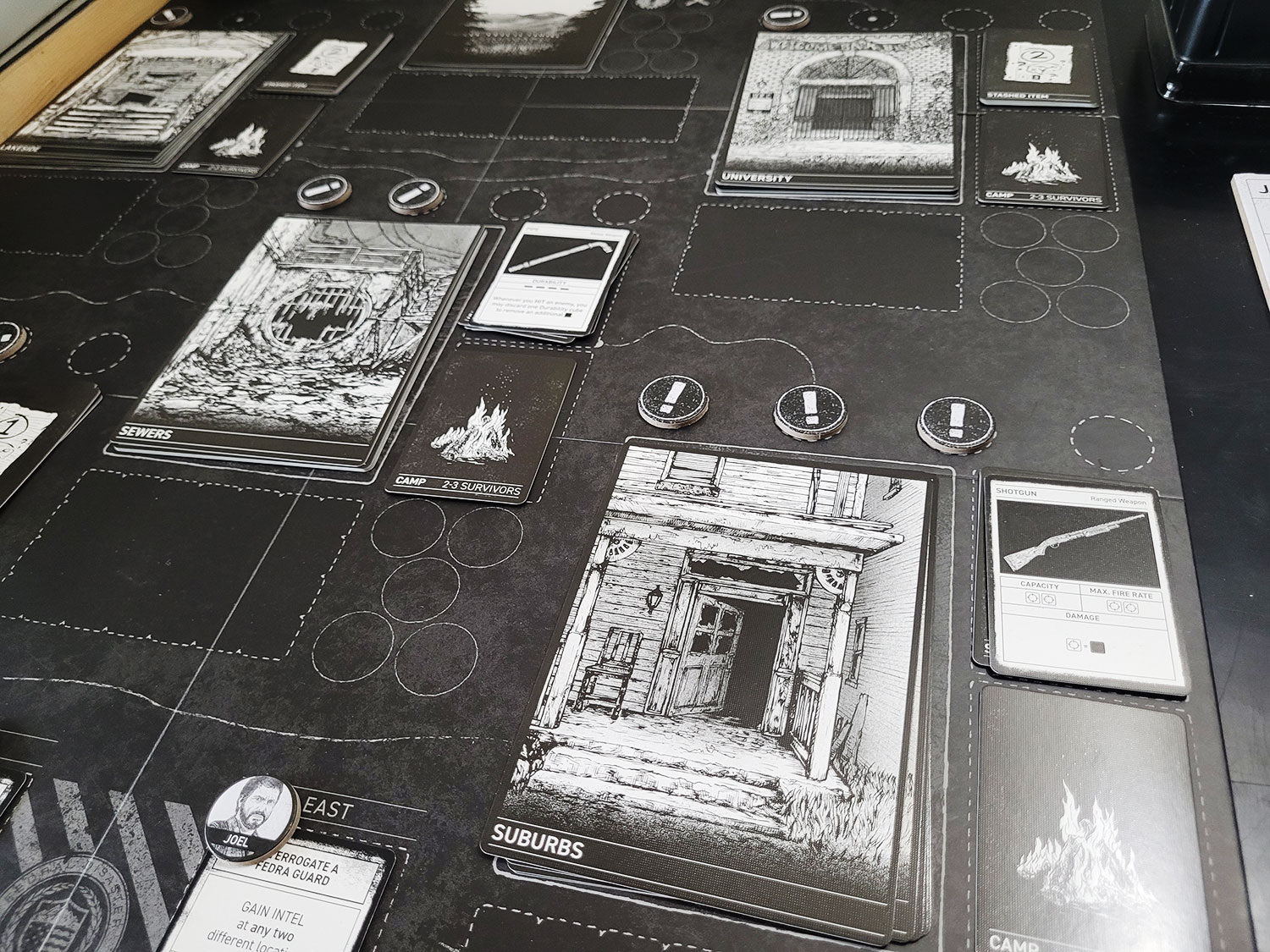
Game Experience:
To get the easy part out of the way first, Escape the Dark is a solid cooperative game. My main criticisms are that it’s a bit repetitive, a bit light on variety, and doesn’t play well at lower player counts (though you can easily run multiple characters to mitigate this). That said, the core gameplay loop of “explore, fight, search” is engaging, and pairs with a suitably ominous art style to create a memorable survival experience. As an adaptation, Escape the Dark is more uneven, and it leaves me trapped between being a reviewer and a fan.
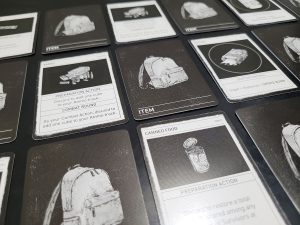
To its credit, Escape the Dark does a good job replicating The Last of Us’s moment-to-moment gameplay. Combat feels desperate—every shot of a pistol or swing of a pipe ties another knot in your stomach, because you know a miss is just a waste of a too-rare resource. Even when an individual combat is easy, you never feel comfortable, because you know later combats will punish you for wasting resources. The pre-combat rounds also help replicate the feel of the video game, and add more tactical considerations. It’s always a good idea to Listen or Sneak in theory, but the penalty for failure is steep enough that it’s never an easy decision.

Unfortunately, Escape The Dark is infuriatingly unconcerned about replicating the aspects of The Last of Us I care most about—namely, its story, world, and characters. With those removed, Escape the Dark’s setting quickly devolves into a nondescript post-apocalypse, with no memorable story beats, no morally difficult choices, and nothing to make players care about the world. In fact, not only does Escape the Dark not feel like The Last of Us, it doesn’t even feel like a zombie game. The outbreak poses no danger to your group, and the Infected you fight are only different from humans in that they don’t shoot guns. You might as well be fighting zoo animals for all the difference it makes to the story and gameplay.
I know I’m being unfair. It would be impossible to translate all these things into a 45-minute co-op, and the game does take care to preserve what it can. The uninspired setting also wouldn’t bother me as much in a generic survival game. It’s only because I’m so excited about The Last of Us that I find the board game so frustrating. The designers put all their effort into the game’s mechanisms, but seemingly no effort into its setting—besides some gorgeous artwork.
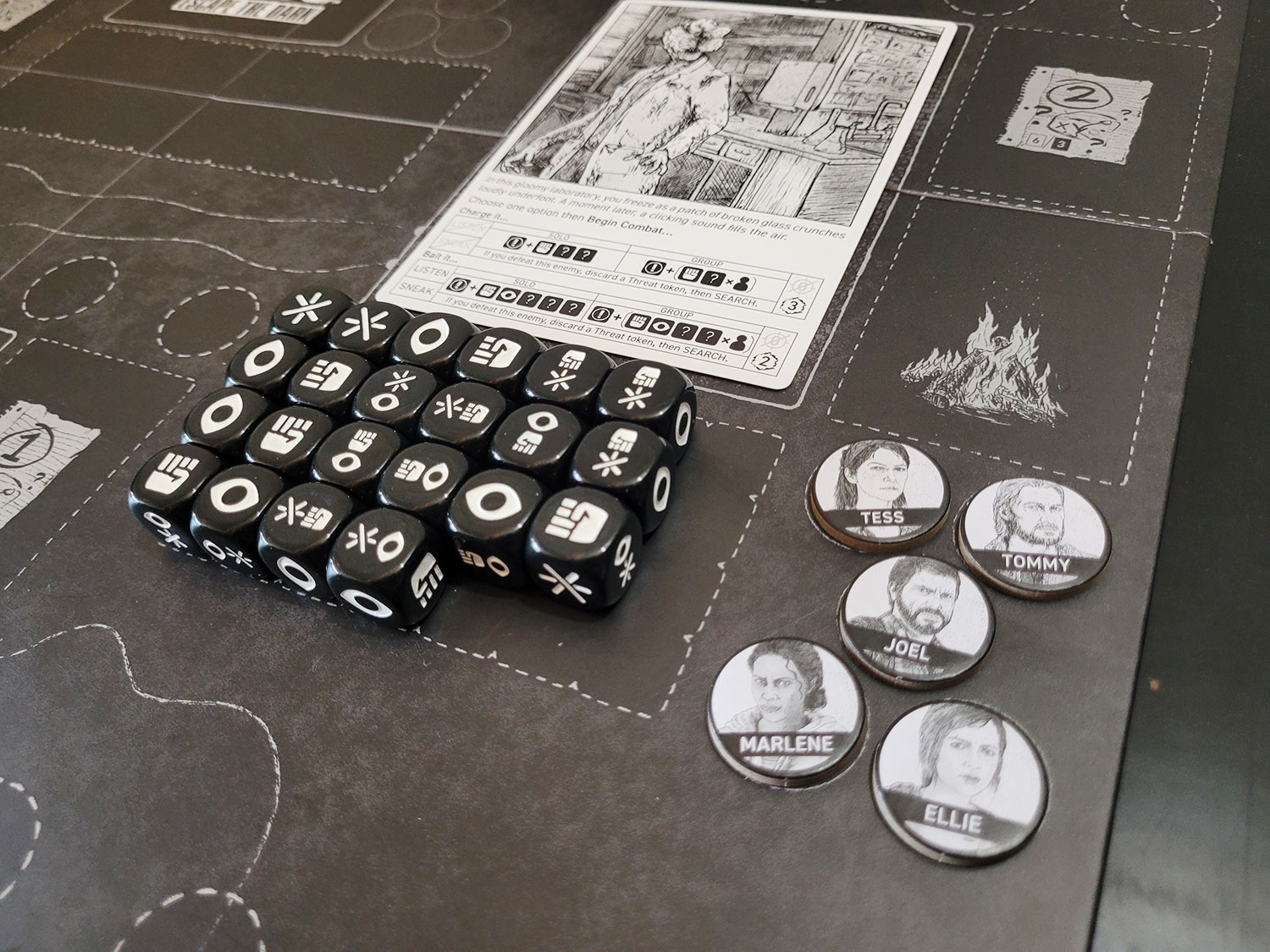
Final Thoughts:
The Last of Us: Escape the Dark is an odd adaptation, in that I think you will enjoy it more if you have no experience with the underlying property. As a survival game, it hits all the right notes, with copious amounts of tension and desperation. As a vehicle for The Last of Us, though, I found it frustrating and underwhelming, aside from its pitch-perfect implementation of combat. The more I played Escape the Dark, the more I appreciated its design—and the more I hated its erasure of the source material.
Final Score: 3.5 Stars. A solid, moody survival game for people who don’t care about The Last of Us.
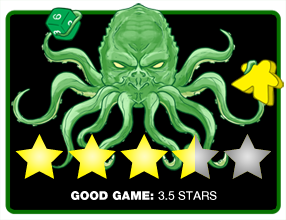 Hits:
Hits:
• Fantastic combat system
• Evocative art style
• Randomness creates tension without feeling capricious
• Exploration encourages table talk
Misses:
• Not great at lower player counts (though this can be fixed by running multiple characters)
• Exploration gets repetitive
• Would have liked more variety in the Chapter cards
• Almost completely abandons the underlying source material





















